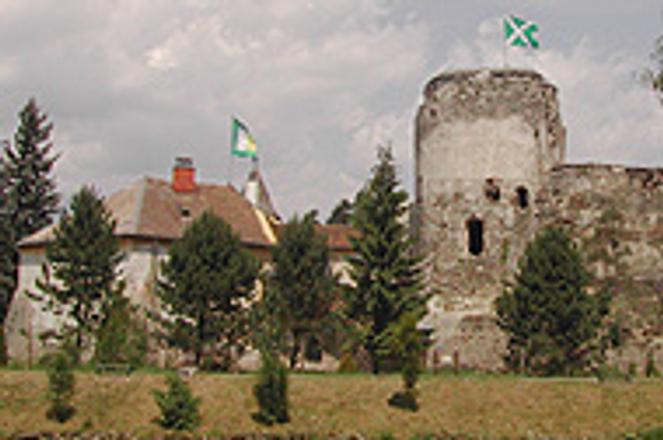The town of Liptovský Hrádok is around 15 kilometres east of Liptovský Mikuláš. The castle is a 10-minute walk from the railway station. For more information check www.lhradok.sk.photo: Ivan Lenko
WHEN entering the Low Tatras mountain range from the little town of Liptovský Hrádok, few visitors stop to look at the large ruins of the local medieval castle, standing on a small hill on the town's outskirts to the north. Nearby is a little lake, a remnant of the water ditches dug in the past for the castle's protection.
Built in the beginning of the 14th century, this gothic castle used to be a part of a lookout system over an important merchant road leading through the valley. Originally, it was only a watchtower, then the structure was enlarged to a castle.
Locals say the castle's underground structure used to link up with Likavský Castle several kilometres away and fortifications in Liptovský Ján town.
The Liptovský Hrádok Castle has had many owners over the years. First it belonged to the Habsburg rulers of the Austro-Hungarian empire, and later it became the property of noblemen such as Thurza, Pograň, and Zápoľa. Erzsébet Báthory - the lady of Čachtice Castle known as the "Bloody Countess" for bathing in the blood of virgins - also owned it for some time.
The owner who most marked the castle's development was Magdaléna Zay. Married four times, this energetic woman repaired the castle in the renaissance style at the beginning of the 17th century, rebuilding part of it as a mansion. Her achievements put the previous male owners to shame, and locals began referring to what she had done with a well-known Slovak saying: "Where the Devil cannot [go], he sends a woman."
According to the castle's legends, one of its owners had a beautiful daughter, who fell in love with the captain of the neighbouring castle's army. However, the proud father did not want to hear about his noble daughter marrying an ordinary soldier. He swore that the Belá river (which runs near the castle) would "flow upstream" before he would say yes to the wedding. The captain thus decided to take his future bride by force. However, when he seized the castle, he found his beloved dead. Her own father had killed her.
The castle's history ended in 1803, when it was burnt down. Later, only the mansion was repaired, which became home to an exhibition displaying local folk traditions. Of the main castle, only two towers with a side wing and an outdoor staircase have remained.


